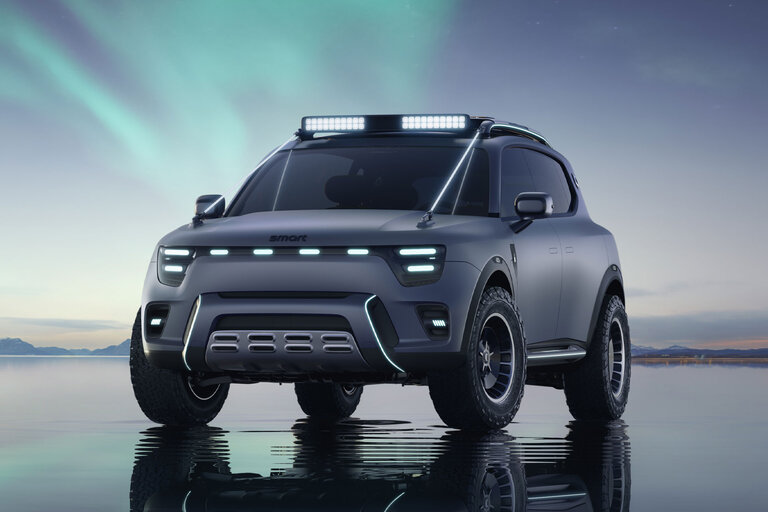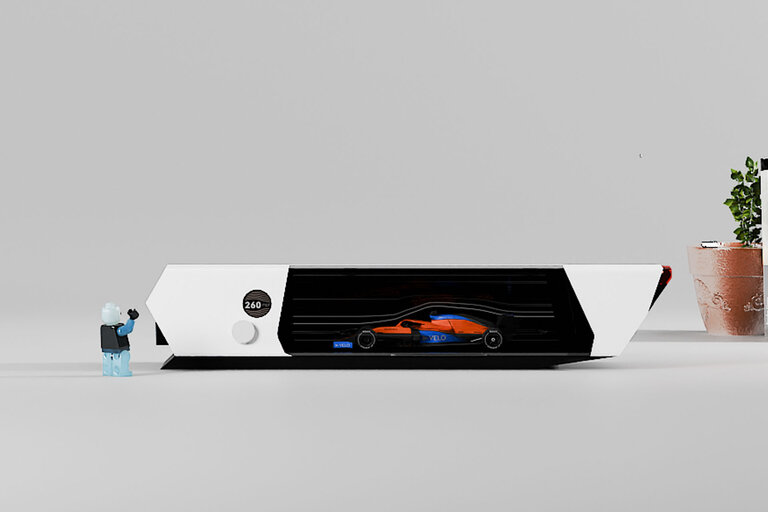
From the July 1992 issue of Car and Driver.
On his best day, could Dan Marino even fit into Johnny Unitas’s shoes? How would Mike Tyson do against Joe Louis in his prime? Would Ayrton Senna look as cool as he does if Jim Clark were on his tail? And how would a 1992 Dodge Viper stack up against the legendary 427 Cobra of 27 years ago?
Three of these four barroom debates will never be settled. But thanks to Carroll Shelby, we’ve brought the past to life again by putting an authentic, newly produced 427SC Cobra up against Dodge’s new Viper.
We can just hear the Cobra fans squawking, “Not fair! The Viper has the advantage of nearly three decades of technological advancements!”
True enough. But remember that the Viper also labors under the burden of the same three decades worth of safety and emissions regulations. That evens the scales considerably. If you don’t believe it, examine our test results.
Our brand-new Cobra test car—number CSX3056—is powered by an original Ford 427 side-oiler engine, and on a recent sunny day in Southern California, it rocketed from a standing start to 60 mph in just 4.1 seconds. The Viper was a few ticks behind at 4.4 seconds. The Cobra also copped the quarter-mile contest, turning a 12.6-second, 110-mph run compared with the Viper’s 13.1-second, 108-mph performance.
It wasn’t until serious triple-digit speeds that the Viper pulled away, thanks to the car’s more favorable aerodynamics and gearing. It reached 130 mph from rest in 19.6 seconds, nearly a second quicker than the Cobra, and from then on it was no contest.
1992 Dodge Viper RT/10
HIGHS: Refinement and comfort, within appropriate limits.
LOWS: Milk-truck exhaust note.
THE VERDICT: Hulk Hogan in the fast lane.
With only four speeds in its gearbox (the Viper has six) and a 4.11:1 final-drive ratio, the Cobra runs into its engine’s 7000-rpm redline at 134 mph. (Even with the more common 3.54 final-drive ratio, the Cobra would achieve no more than 155 mph.) The Viper, with a 3.07 rear-end ratio, tops out at 163 mph in fifth gear at 4900 rpm.
The Cobra’s short gearing may truncate its top speed, but it sure gives it an energetic liveliness in everyday driving. A 2660-pound curb weight doesn’t hurt, either. High-gear acceleration is the best we’ve ever measured in a car with a manual transmission: it needs only 3.1 seconds to go from 30 to 50 mph and 2.9 seconds from 50 to 70 mph.
The 3400-pound Viper offers the same lively pick-up, but you have to drop down to third gear to find it. In high, the Viper is a comparative slug, needing more than ten seconds to cover each increment.
Obviously, by the standards of this or any other age, both of these cars are rockets. They’re also intensely fun to drive, though they are different as chili and steak.
The Cobra has a profound vintage feel, from the moment you swing open the tiny aluminum door, drop into the low-back bucket seat, and grasp the large-diameter, thin-rimmed wooden wheel. The side-exit exhaust headers—originally developed for competition use but now considered almost mandatory for all cars of this ilk, replica or real—announce every hit of the 7.0-liter Ford with a loud rim shot. The exhaust system encourages smooth driving because it broadcasts every motion of your throttle foot throughout the county. As loud as the pipes are, they never cause your eardrums to rattle, perhaps because the pipe outlets are pointed away from car’s occupants.
Despite its lack of power assistance, the Cobra’s steering is reasonably light everywhere but in a parking lot. There was none of the Nautilus-machine steering resistance or hair-trigger turn-in that we found on some of the Cobra replicas we tested last December. The car does seem somewhat darty around center, but the steering settles nicely once bent into a curve. This hint of instability gives the car the feel of a caged animal, itching to run wild, that is kept in check only by the driver’s constant attention.
Pedal efforts in the Cobra are moderately high (except for the brake, which is extremely heavy), and the trademark lean-forward shift lever makes for a surprisingly accessible four-speed H-pattern because movement through its gates mirrors the way your forearm pivots from the elbow.
1965 Shelby Cobra 427SC
HIGHS: Simplicity, honesty, authenticity.
LOWS: A price straight out of the Defense Department.
THE VERDICT: Still the king, and nice to see it back.
Thanks to its smooth clutch engagement, boundless engine torque, short gearing, and light weight, the Cobra gets under way easily and putters docilely through traffic. The hammering exhaust note makes it seem rowdy, but the car responds readily, shows no inclination to load up or overheat, and offers unrestricted visibility (except in the tiny, vibrating mirrors).
Driving this Cobra at sleepy rpm levels on urban streets, freeways, and suburban boulevards poses no mechanical challenges to the big 427. But be prepared to attract an enormous amount of attention, especially in an unpainted car like this one, for the naked, brushed-aluminum skin is an unmistakable clue that this is no cheap knockoff. On our way to Willow Springs, a drop-dead blonde in a late-model Corvette fought her way across several lanes of a clogged freeway just to tell us she loved this car. Ever been chased around by a killer blonde?
Knockout blondes notwithstanding, the best part of driving the Cobra is flexing its considerable legs in open country. Despite its 1960s roots and reputed twitchiness (more a trait of the earlier small-block cars with their transverse leaf springs, equal-length control arms, and less rigid frames), the 427 Cobra gets into and through bends quickly, with a lot more poise than theatrics.
Plus, the tach needle can be almost anywhere on the scale, and still the engine delivers a massive lunge from one corner to the next. This is as exciting as four-wheeled motoring gets, particularly the close-to-the-road feel of the open cockpit and low-cut doors. All the while, that monster motor is putting out a brilliant soundtrack, a brutish wail coming from its barely muffled sidepipes, sounding like a cross between an old Can-Am car and God’s own ski boat every time you tip into its big Holley four-barrel.
Then there’s the 1992 Dodge Viper RT/10. Plush and refined. And silent. The steadfast commitment to side-outlet exhaust pipes, which are racy but aim straight into today’s federal sound-level microphone, backed the Team Viper engineers into a corner on engine noise. Which is to say, there isn’t any—at least none of the high-character rumble or blat that should be proclaiming the presence of a unique ten-cylinder powerplant.
With the exception of this timid silence, however, we’re comfortable with the relative civility of the Viper, because it does not materially compromise the animal appeal of the car. This is a lusty, powerful roadster—and the light, accurate shifting, the modernly thick, grippable steering wheel, and the power assists on the steering and the brakes do not make it anything less. It also rides decently, feels stiffer in torsion than the Cobra, and puts down the biggest tire footprint in production-car history.
The 488-cubic-inch V-10 is smoother and more sedate at low speeds than the Cobra’s 427 V-8, an engine that was Ford’s raciest of the 1960s. Thanks to its modern engine-management system, the V-10 also produces a broader flow of torque than the old Ford side-oiler, which somewhat offsets the Cobra’s weight and gearing advantages. But a Viper driver still ends up shifting more than his Cobra counterpart.
Because of its stickier, modern tires, longer wheelbase, and wider track, the Viper sticks to the pavement more tenaciously than the Cobra—0.91 g to 0.88, respectively. The same combination of factors, as well as its tighter steering, also makes it the easier of the two cars to coax toward its limit. (We don’t think a subconscious accounting of the relative replacement costs figured into that, although the Cobra’s unpainted aluminum skin did look awfully vulnerable as it skirted the stony cliffs and sheer dropoffs bounding Angeles Forest Highway.)
Both cars are capable of maintaining high average speeds over long stretches of winding road, and speedy seven- or eight-tenths motoring is a delight in either one. But they do split somewhat along personality lines, with the more primitive Cobra feeling somewhat wilder, while the more contemporary Viper feels a little better settled. Exhaust note, again, has a lot to do with this distinction.
In town, the Viper easily matches the Cobra for neck-twisting visual magnetism. Not only is the Viper perhaps the only body shape to come close to equaling the Cobra’s mechanical muscularity, but it also has the advantage of novelty. This is a motoring Madonna if ever we’ve seen one.
Of course, the ten-to-one price difference between the $55,000 Viper and the $500,000-plus Cobra means these two cars are hardly alternative buys in the normal sense. But they are spiritual kin, identical in concept, and—incredibly, improbably, unimaginably—both are coming to market (or coming back to market) in 1992, a year when car companies big and small are gasping and wheezing, cutting back and laying off, and citing endless good reasons for not taking risks.
Carroll Shelby is a common clement to both cars. He served as an adviser to Chrysler during the Viper’s gestation, and now he is planning to bring to market complete, brand-new 1965 427 Cobras, built on some of the 43 unfinished chassis he has had tucked away for the last quarter-century.
But if you think this might be your easy route to a real Cobra that’s more affordable than the several-hundred-thousand-dollar originals, forget it. Shelby’s minimum price will be half a million bucks.
That figure may make sense to a few determined enthusiasts because the car is the genuine article, plus it’s brand-new and employs upgraded materials in some areas. “I’m building the car exactly as I wanted to build it 25 years ago,” says Shelby. But the high auction prices that establish that kind of value assume a strictly finite supply. What happens when Shelby drops a few dozen more 427s on the market? What would happen to the value of Van Gogh paintings if the master popped up out of his grave next week, dusted himself off, and started churning out new pictures?
But that’s not our concern here. And regardless of what Shelby and the government work out regarding emissions, this Cobra revival has given us the chance to pit the generation-old 427SC against its only modern competitor. Both offer the close-to-the-elements thrills that have been bred out of modern cars. Just as going 60 mph in a Lincoln Town Car is not at all the same as doing 60 on a skateboard, these cars are vastly more different from regular cars than they are like them.
In that sense, the Dodge Viper RT/10 and the Shelby 427 Cobra are exercises in the ineffable appeal of extremes. By the standards we normally use to judge automobiles, they are virtueless: They have no luggage room to speak of, no stowage space, no weather protection. They’re expensive, and the greenies view them as wasteful. Yet on that non-rational scale where excitement, fun, and lust are measured, the Viper and the Cobra peg every needle in sight.
What could be more irresistible?
This content is created and maintained by a third party, and imported onto this page to help users provide their email addresses. You may be able to find more information about this and similar content at piano.io
Source link





